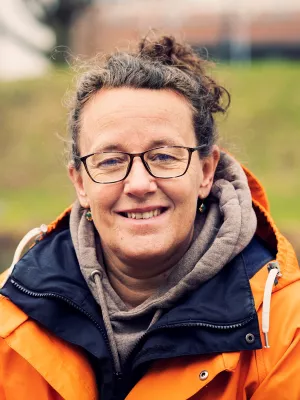
Johanna Alkan Olsson
Universitetslektor

The use of conservation tillage in an agro-intensive region : results from a survey of farmers in Scania, Sweden
Författare
Summary, in English
Conventional agricultural practices can lead to soil erosion and a reduction in soil organic carbon (SOC) content. It has been suggested that less intensive agricultural practices, such as conservation tillage (including no-till and reduced till without soil inversion) may reduce both erosion and loss of SOC. The aim of this study was to determine whether, and why, conservation tillage is used in Scania, which is one of the most agro-intensive regions in Sweden. We also investigated how information on tillage practices is obtained, why one type of tillage may be favored over another, and whether some farmers are more likely to use conservation tillage. The result of this study will benefit policy makers and researchers by pinpointing factors that influence the use of conservation tillage. To collect data, a questionnaire was sent to farmers in Scania in 2016. We found that the majority of the responding farmers used conservation tillage, and that it was more likely to be used if the farmer was highly educated and spent more than 50% of their annual working time on crop production. The use of conservation tillage was also more common if the farm was large and clay soil dominated. Crop rotation was often highlighted as the most important factor influencing the choice of tillage practice, which may be due to crop species requirements. When asked to compare the consequences of reduced tillage and plowing, the perception of farmers using conservation tillage was in general more positive, indicating skepticism toward the practice of reduced tillage until it had been tried. We show that the use of conservation tillage, sometimes in combination with plowing, is widespread in Scania. However, unless changes in, for example, crop rotation and labor requirements occur, the use of conservation tillage will most likely remain the same as today, or only increase slightly in the near future. Farm enlargement may result in an increased conservation tillage use, and so may efforts to educate advisors, increased opportunities for peer-to-peer meetings, and the development of economically viable small farm solutions. Increased conservation tillage may be part of the solution for sustainable crop production, but drawbacks such as increased pesticide use must be addressed further, as well as factors such as crop rotation development and practical knowledge that influence conservation tillage use at the farm level.
Avdelning/ar
- Växtbiologi
- Biodiversitet
- Centrum för miljö- och klimatvetenskap (CEC)
- BECC: Biodiversity and Ecosystem services in a Changing Climate
Publiceringsår
2020-02
Språk
Engelska
Sidor
59-68
Publikation/Tidskrift/Serie
Renewable Agriculture and Food Systems
Volym
35
Issue
1
Dokumenttyp
Artikel i tidskrift
Förlag
Cambridge University Press
Ämne
- Environmental Sciences related to Agriculture and Land-use
Nyckelord
- Conservation tillage
- crop rotation
- farmer
- plowing
- Sweden
Status
Published
Forskningsgrupp
- Plant Biology
ISBN/ISSN/Övrigt
- ISSN: 1742-1705